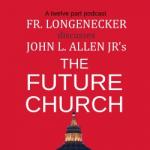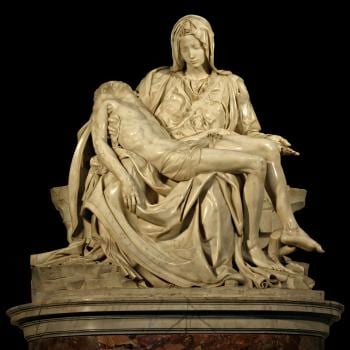Baron Foster of Thames Bank aka Norman Foster is the baron of high tech modernist architects. Foster is famous for the glass and steel Hearst Tower in New York and pickle shaped “Gherkin” that distinguishes the modern London skyline.
Quick off the mark after the Notre Dame fire, Foster enthused that the restoration of the cathedral was a “great opportunity.” His rapidly sketched out design calls for a needle like spire made of “crystal glass and stainless steel” with an observation deck at its base. A new glass roof for the cathedral would allow “natural light to illuminate the space below.”
The good thing about Foster’s plan is that the modernists have come up so quickly with an idea so patently absurd that one hopes all other similar glass and steel solutions will be consigned to a high tech shredder immediately.
What’s dumb about Foster’s ideas? Firstly, is it possible that an architect so eminent can be ignorant of the medieval design of the cathedral? The interior of the great church is capped by stone vaulting. The wooden roof perched above the stone ceiling. Foster’s glass roof could not “allow natural light to illuminate the space below.”
Foster would have to destroy the stone vaulting to allow natural light into the nave. Perhaps he did know about the medieval vaulting. One mustn’t underestimate the modernist’s enthusiasm for wanton destruction.
Imagine If the space were flooded with natural light. The entire ambience of the cathedral would be destroyed. The cool darkness in an ancient church is part of its otherworldliness. The natural light filtering through high windows and changing with the seasons provides a subtle interplay of light and stone. The glorious stained glass windows glitter like supernatural jewels only because the church is in comparative darkness.
Presumably Foster, like most modern architects is driven by that inane dogma “Form follows function.” Yet he seems to have no idea at all what the function of a church like Notre Dame might be. His idea that the roof should include an observation deck indicates his understanding that the church is primarily a tourist attraction. He is not the only one. In a hilariously ignorant headline, an AP writer piously informed us: “Tourist Mecca Notre Dame Also Revered As Place Of Worship.”
Traditionalists have shaken their heads in horror at Foster’s proposal. The idea that the spire should be replaced with a Muslim minaret was even more horrifying.
The traditionalist will plead for a complete and faithful restoration. But wouldn’t this be going to the other extreme? How faithful must the restoration be? Will they build an exact replica? Must they restore the roof using ancient oak beams? Will the spire be a faithful reconstruction of the one destroyed by the fire? Must the oak beams be worked with medieval axes and adzes? Can they use steel scaffolding and an elevator to get up there? May the workers wear helmets and overalls or must they be clad in linen smocks, clogs and eat gruel for their lunch?
You see my point. There is a modernist extremism and a traditionalist extremism. Surely the best way forward is a balance between the old and the new.
To slavishly reproduce the past—as for example in Colonial Williamsburg—may be educational but it is not real. Likewise, to simply build a replica of the medieval Notre Dame would be artificial and dull.
A good architect will use modern materials and methods to devise a roof and spire for Notre Dame which takes advantage of up to date technologies while building a spire that is modern in style, while complementing the rest of the cathedral. The spire should be a graceful and humble accent to the Gothic masterpiece.
The traditionalist will critique such a spire for being too modern. The modernist will criticize it for being a boring replica.
A few years ago in our parish in South Carolina we built a new church in the Romanesque style. When the architect was challenged by one of his peers for simply repeating a worn out and dated style his reply was, “This style of architecture is like a sonnet. It has certain characteristics and disciplines. When you write a sonnet you stay within those boundaries, but your sonnet is original. It may be a Romanesque, but it is our Romanesque.”
The arguments about the Notre Dame spire highlight the deep divide in Western culture between radical, secular progressivism and what I call imaginative conservatism. The progressive is, at heart, an iconoclast. A revolutionary. For him to move forward into the brave new world, the past must be destroyed.
The imaginative conservative looks at the present and the future as an exciting challenge. He faces the future with optimism regarding the past as the foundation for the future. The past not only provides the language, discipline and form. It provides a deep well of experience and inspiration. Working within, and with the tradition, the artist, architect, composer or writer will produce something original.
Let’s hope that the architects charged with the re-building of Notre Dame will be wise and humble enough to submit to the principles of imaginative conservatism. If they do they will produce a spire that may be Gothic but “it will be our Gothic.” If so, the new roof and the new spire will be a modern expression of the ancient beauty.
Follow Dwight Longenecker’s blog, listen to his podcasts, browse his books and be in touch at dwightlongenecker.com
Image: Spire of Salisbury Cathedral, England. Creative Commons.












